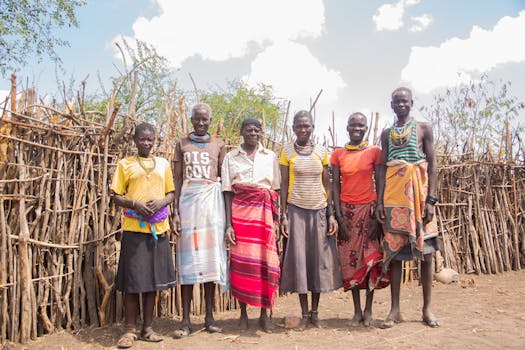
Connecting Cultures: The Story Behind Africa’s Diverse Fiber Traditions – WordPress
Connecting Cultures: The Story Behind Africa’s Diverse Fiber Traditions – WordPress. Africa is a vast and diverse continent, home to over 50 countries and more than 2,000 languages. One of the most fascinating aspects of African culture is its rich and varied fiber traditions. From the colorful textiles of West Africa to the intricate basketry of Southern Africa, each region has its own unique fiber arts heritage.
Africa’s fiber traditions are not just about creating beautiful objects; they are also deeply rooted in the continent’s history, mythology, and cultural practices. In many African societies, fiber arts are used to communicate, to tell stories, and to pass on knowledge and values from one generation to the next. For example, in Ghana, the iconic kente cloth is not just a stunning textile, but also a symbol of cultural identity, wisdom, and spiritual connection.
The History of African Fiber Traditions
The history of African fiber traditions dates back thousands of years. Archaeological evidence suggests that ancient Africans were skilled fiber artists, using plant fibers such as cotton, linen, and bast to create clothing, textiles, and other essential items. As African societies evolved and trade networks expanded, fiber arts became an important part of cultural exchange and commerce. African fiber artists began to incorporate new materials, techniques, and designs into their work, resulting in the incredible diversity of fiber traditions we see today.
One of the most significant influences on African fiber traditions was the trans-Saharan trade. For centuries, African merchants and traders traveled across the desert, exchanging goods such as cotton, wool, and silk for other valuable commodities. This trade not only introduced new materials and techniques to African fiber artists but also facilitated the spread of ideas, myths, and cultural practices. The result was a rich tapestry of fiber traditions, each with its own unique character and significance.
Regional Fiber Traditions
Africa’s regional fiber traditions are incredibly diverse, reflecting the continent’s complex history, geography, and cultural landscape. In West Africa, for example, the Dogon people of Mali are renowned for their stunning cotton textiles, which are woven on narrow looms and adorned with intricate geometric patterns. In contrast, the Zulu people of South Africa are skilled basket makers, using grasses and other plant fibers to create beautiful, functional containers.
In East Africa, the Maasai people are famous for their vibrant beaded jewelry and textiles, which are made from a combination of glass beads, cowry shells, and plant fibers. The Maasai are also skilled leather workers, creating beautiful, tooled leather goods such as belts, bags, and sandals. In North Africa, the Berber people are known for their exquisite woven textiles, which are made from wool, silk, and cotton, and are often adorned with intricate geometric patterns and symbolic motifs.
Preserving Africa’s Fiber Traditions
Despite the incredible richness and diversity of Africa’s fiber traditions, many of these arts are under threat. As globalization and urbanization continue to transform African societies, traditional fiber arts are often seen as old-fashioned or irrelevant. Young people are increasingly drawn to modern, Western-style clothing and textiles, rather than traditional, handmade fiber arts.
To preserve Africa’s fiber traditions, it is essential to support and promote the work of African fiber artists. This can involve providing training and resources, such as access to high-quality materials, equipment, and markets. It also requires raising awareness about the significance and value of African fiber traditions, both within Africa and around the world. By celebrating and preserving these incredible arts, we can help to ensure their continuation for generations to come.



